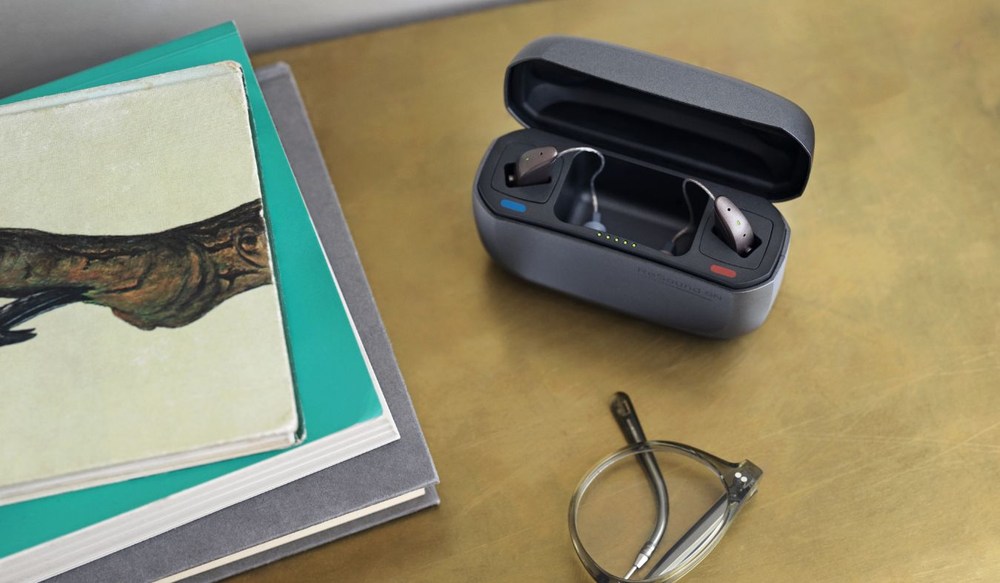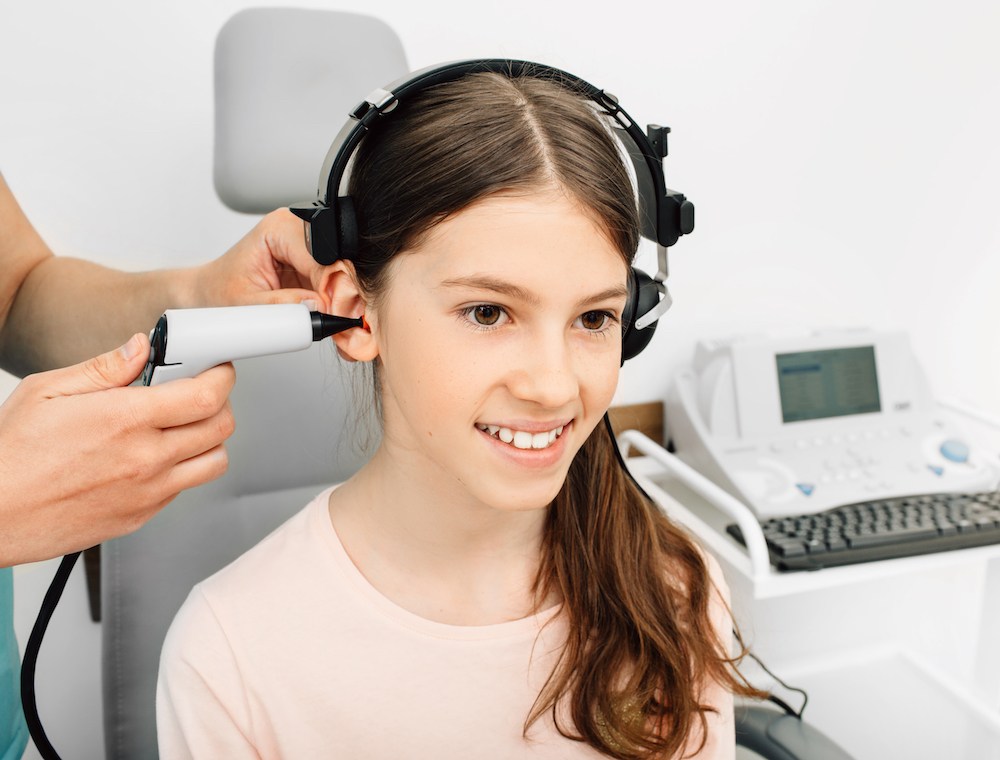Hearing Aids for Musicians: Specialized Features
For musicians with hearing loss, choosing the right hearing aids can be
Now offering the only FDA approved Tinnitus Treatment Device. LEARN MORE →

By: admin | January 26, 2025
Often, changes in our hearing happen so slowly that we might not notice them right away. Maybe you find yourself turning up the TV volume more than before or having trouble following conversations when there’s background noise. These small changes can add up over time.
Getting your hearing tested is a simple but important step in taking care of your health. Many people put off hearing tests because they’re unsure what to expect or think hearing loss is just part of getting older. But the sooner you understand your hearing needs, the sooner you can address them.
Good hearing helps us stay active and engaged with the people around us – whether we’re catching up with old friends over coffee, playing with grandchildren or participating in community activities. A hearing test gives you clear information about your hearing and helps you make informed decisions about your next steps.
Our bodies change as we get older, including our hearing. It’s not uncommon for seniors to experience some degree of hearing loss. However, many might not realize that unchecked hearing loss can affect other areas of your health and wellbeing.
Routine appointments with an audiologist can help detect any changes in your hearing early. This allows you to take action before it significantly affects your daily life. Regular hearing tests can also help avoid unnecessary stress or confusion that might come from not being able to communicate effectively or enjoy social activities as much as before.
When you arrive for a hearing test appointment, the first part of the visit will focus on gathering important information about your overall health and hearing history. The audiologist may ask about your medical background, including any illnesses, medications or injuries that could impact your hearing. They’ll also want to know if you’ve been exposed to loud noise through work, hobbies or other activities.
It’s common for the specialist to ask about your lifestyle as well. Do you spend a lot of time on the phone? Attend group meetings? Enjoy outdoor activities? This kind of information helps them understand how your hearing challenges might affect your daily life. If you’ve noticed any changes recently, like needing to turn up the TV or misunderstanding words more often, this is a good time to mention it. Be honest about what you’re experiencing so they can get a full picture of your hearing health.
Before the actual tests begin, the audiologist will also take a close look at your ears. Using an otoscope, they’ll examine your ear canals and eardrums to check for any blockages or physical issues, such as earwax buildup or signs of infection. This quick check ensures that any underlying issues are addressed and won’t interfere with the hearing evaluation. By the time the testing starts, the audiologist will have a clear understanding of your unique hearing history, setting the stage for a thorough and accurate assessment.
When you go for a hearing evaluation, the audiologist might use a variety of tests to get a comprehensive view of your hearing abilities. Each test examines a specific aspect of how your ears and brain process sound, helping to create a clear picture of your hearing health. Here are a few commonly used hearing tests and what you can expect from them.
Pure-tone audiometry is a basic test used by professionals to measure your hearing capabilities. You’ll be asked to wear headphones and listen to a series of tones at different pitches and volumes. Your job? Just indicate when you can hear these sounds! This process helps the specialist pinpoint any specific frequencies where your hearing might be less sharp.
Speech audiometry evaluates how well you understand speech in both quiet and noisy environments. You’ll listen to words or sentences at varying volumes, then repeat what you heard back to the audiologist. This test gives insight into how well you’re able to understand speech in everyday situations.
Tympanometry assesses the function of your middle ear. During this test, a small device is placed in your ear canal, which changes the air pressure while emitting a tone. You might feel a slight sensation of fullness, but it’s completely painless. This test helps determine if there’s fluid, a perforation in the eardrum or other issues that could affect your hearing.
Otoacoustic emissions (OAE) testing checks how well the tiny hair cells in your inner ear are working. A small probe is placed in your ear, emitting soft sounds and measuring the response. If the hair cells are functioning properly, they will produce a faint echo in response. This test is often used to detect hearing changes in the inner ear that might not be apparent during other evaluations.
Bone conduction testing measures how well your inner ear can detect sound by bypassing your outer and middle ear entirely. A small device is placed behind your ear, sending vibrations directly to your inner ear. This test helps pinpoint whether hearing difficulties are related to the outer or middle ear, or if the issue lies in the inner ear itself.
These tests, combined with pure tone audiometry and speech audiometry, give the specialist a detailed understanding of your hearing capabilities, helping them recommend the best solutions for your needs.
An audiogram is like a map of your hearing ability. It charts out different pitches and volumes, showing us exactly what you can hear and where you might have difficulty. But don’t let this chart intimidate you! It’s simply a tool used by your audiologist to make sense of your hearing test results.
Here’s how it works: On one side of the graph, you’ll see numbers representing different frequencies or pitches (like notes on a piano). On the other side are numbers for decibels or volume levels (how loud or soft sounds are). Your responses during the hearing test help plot points on this graph – creating a unique ‘sound profile’ that reflects your individual hearing capabilities. With this knowledge, both you and your audiologist can discuss any necessary steps to manage changes in your hearing effectively.
Age-related hearing loss can subtly infiltrate your daily routine, sometimes making it hard to notice its impact initially. But as time goes on, the effects become more apparent and can alter the rhythm of your everyday life.
Imagine missing out on the punchline of a joke at a family dinner or struggling to hear your favorite TV show clearly. Even simple things like talking on the phone or catching up with friends can become frustrating tasks. These are just a few examples of how age-related hearing loss can affect day-to-day activities.
The good news is that you’re not alone in this, and there are solutions available. Regular check-ups with a audiologist can help manage these changes effectively, ensuring that you continue to enjoy life’s symphony without missing a beat! Remember, managing age-related hearing loss is not just about maintaining good ear health; it’s about preserving your quality of life too.
Hearing aids are highly customizable devices that amplify sounds to match your specific hearing needs. They come in a variety of styles, like behind-the-ear (BTE), in-the-ear (ITE), in-the-canal (ITC) and completely-in-canal (CIC) models. Each style is designed to suit different levels of hearing loss and preferences for visibility and comfort.
For example, BTE hearing aids are versatile and powerful, making them a good choice for a wide range of hearing needs, while ITC and CIC models are smaller and more discreet, ideal for those who prioritize minimal visibility. Working with your audiologist you can select a style that fits your level of hearing loss, your comfort, and your day-to-day activities.
Modern hearing aids also offer advanced features that can be tailored to your preferences. Directional microphones can focus on sounds coming from a specific direction, making conversations easier in noisy environments. Bluetooth connectivity allows seamless streaming of phone calls, music or TV audio directly to your hearing aids. Noise reduction settings and programs for specific environments, like restaurants or outdoor gatherings, further enhance their usability and personalization.
ALDs are another option that complements hearing aids or serves as an alternative in certain situations. These devices are designed to improve hearing in specific settings, like watching television, attending lectures or participating in group discussions. They work by amplifying sound directly from the source and sending it to your ears through headphones or neck loops, reducing background noise and making the primary sound clearer.
Hearing aids and ALDs together offer a comprehensive approach to managing hearing loss, allowing you to stay connected and confident in any situation. By consulting with an audiologist, you can explore these options and determine which combination will best suit your lifestyle and needs.
Taking the time to get your hearing tested can make a real difference in how you experience daily life. By understanding your hearing needs early, you can take steps to address any changes and stay connected to the activities and relationships that matter most. Whether it’s sharing a laugh with loved ones, enjoying a favorite song or staying involved in your community, good hearing plays a key role in keeping these moments vibrant and fulfilling.
At Alliance Center for Hearing, we understand that each person’s experience with hearing loss is unique and deserves an equally unique solution. Our team of professionals is ready to guide you through every step of the process – from understanding your test results to finding the right tools for managing any identified changes in your hearing ability.
If you’ve been contemplating getting a hearing test or need more information on how we can assist with your auditory health, don’t hesitate to reach out to us by calling (701) 401-9719 at our Bismarck, ND location.
Tags: audiogram, pure tone testing, tympanometry

For musicians with hearing loss, choosing the right hearing aids can be
By: admin | October 20, 2025

When was the last time you had your hearing checked? If you’re like
By: admin | July 29, 2025

Most people schedule hearing tests when they’re having trouble
By: admin | June 20, 2025
